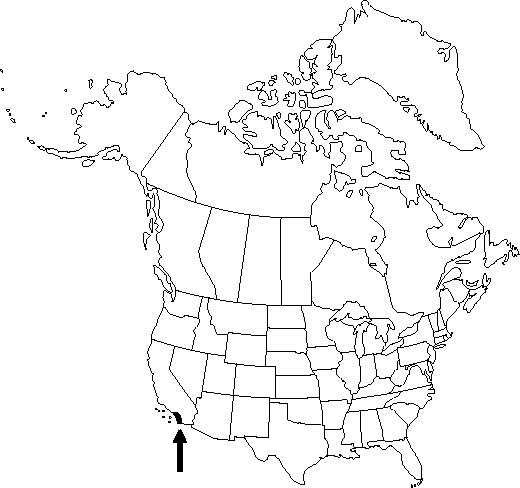Clematis pauciflora
in J. Torrey and A. Gray, Fl. N. Amer. 1: 9. 1838.
Stems scrambling to climbing, 2-3 m. Leaf-blade 1-2-pinnate, usually 5-foliolate, sometimes proximal and lateral leaflets also 3-foliolate; leaflets ovate to lanceolate, usually 3-lobed, 1-3.5 × 0.7-3.2 cm, membranous to leathery, margins each usually with 1-3 acute to rounded teeth, rarely entire; surfaces glabrous or very sparsely silky. Inflorescences axillary, 3 (-12) -flowered cymes or flowers solitary or paired. Flowers unisexual; pedicel slender, 1-3.5 cm; sepals widespreading, not recurved, white to cream, obovate to oblanceolate, 7-12 mm, abaxially pilose to silky, adaxially glabrous; stamens 30-50; staminodes absent or fewer than stamens; filaments glabrous; pistils 20-50. Achenes broadly ovate to nearly orbiculate, 4-4.5 × 2.5-3.5 mm, conspicuously rimmed, glabrous; beak 2.5-4 cm.
Phenology: Flowering winter–fall (Jan–Oct; usually Mar–Apr).
Habitat: Dry chaparral, edges of meadows and cultivated fields
Elevation: 0-2200 m
Distribution

Calif., Mexico (Baja California)
Discussion
Clematis pauciflora is a distinctive species easily identified by the small, 3-lobed leaflets, glabrous or almost glabrous leaves and stems, and large, suborbicular achenes. Intermediates between C. pauciflora and C. lasiantha are present where the two species occur together.
Selected References
None.
Lower Taxa
"thin" is not a number.